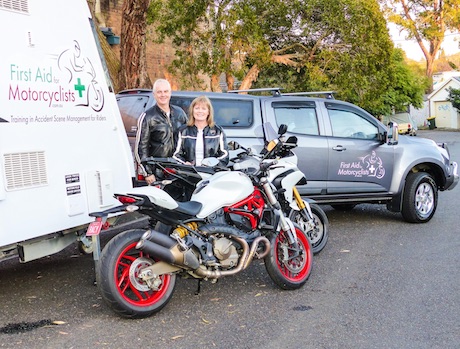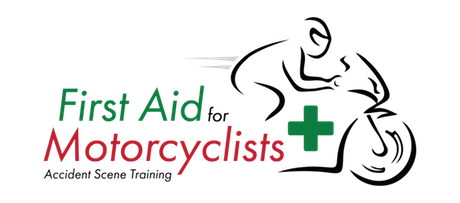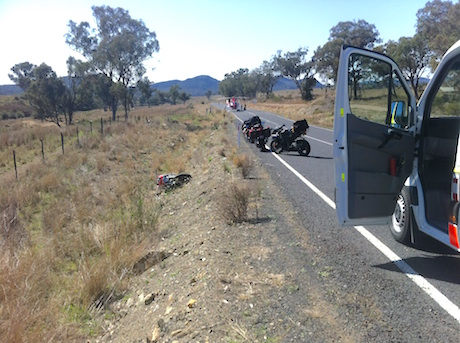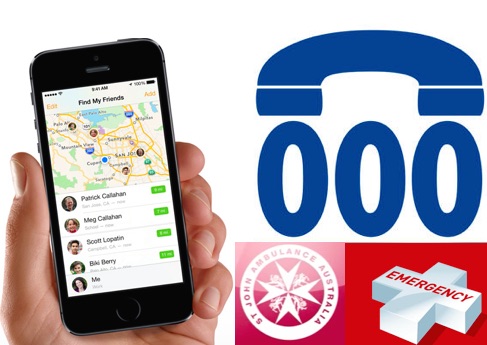Even if you have no first-aid skills, there are several things you can do at a motorcycle crash scene to ensure no one else is hurt and the casualty has the best chance of surviving.
The founders and former owners of First Aid for Motorcyclists, Tracy Hughes and partner Roger Fance, say the first and most important thing is that someone takes charge.

They say that often people will forget the most basic and important matter of contacting emergency services because people assume someone else has done it.
If you take charge, you can delegate other people to attend to roles that will ensure the safety of other people at the scene.
The easy way to remember them is DRS, as in “doctors”.
D for DANGER
The first thing the first aider in charge of the scene should do is to assess the dangers.
Motorcycle crashes potentially leave the casualty and attending riders in a dangerous position as they are stopped on the road without the protection of a vehicle.
“Crashed riders can be killed by being run over after the crash because no one has managed the scene properly,” Tracy says.
The leader should dispatch riders to warn approaching traffic from both directions of the accident scene, placing their bikes on the road with the headlight on and hazard lights flashing.
The scene should also be scanned for other dangers such as leaking fuel and downed power lines.
“A lot of people get target fixation on the casualty at a crash scene, rather than observing the whole scene,” Tracy says.
The main duty of the first aider in charge at this point is to keep casualty calm.
They should also think about infection and make sure they and others attending the casualty wear gloves.
R for RESPONSE

“Ask them their name and where they believe they are injured,” Tracy says.
“Don’t bombard them with questions, but ask enough to assess whether they are breathing and making sense.
“Be calm and reassure them.”
She says you should approach the casualty from the front so as not to alarm them and crouch down to their level to reassure them.
Make sure the casualty remains where they are with their helmet on.
Ask if they were riding with a pillion and, if necessary, scan the sides of the road for an ejected pillion. A good indication is if the pillion pegs were deployed on the bike.
S for SEND FOR HELP
“This is the one that gets missed a lot,” says Tracy.
“People become so fixated on the victim that they forget to ring the emergency number.
“Even a three or four minute delay can make a difference.”
The next stages of assisting at a crash scene involve first aid and should be left to someone who has undertaken an appropriate first-aid course.




